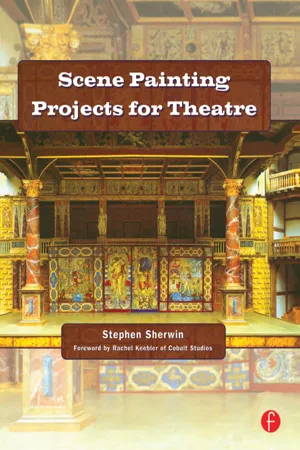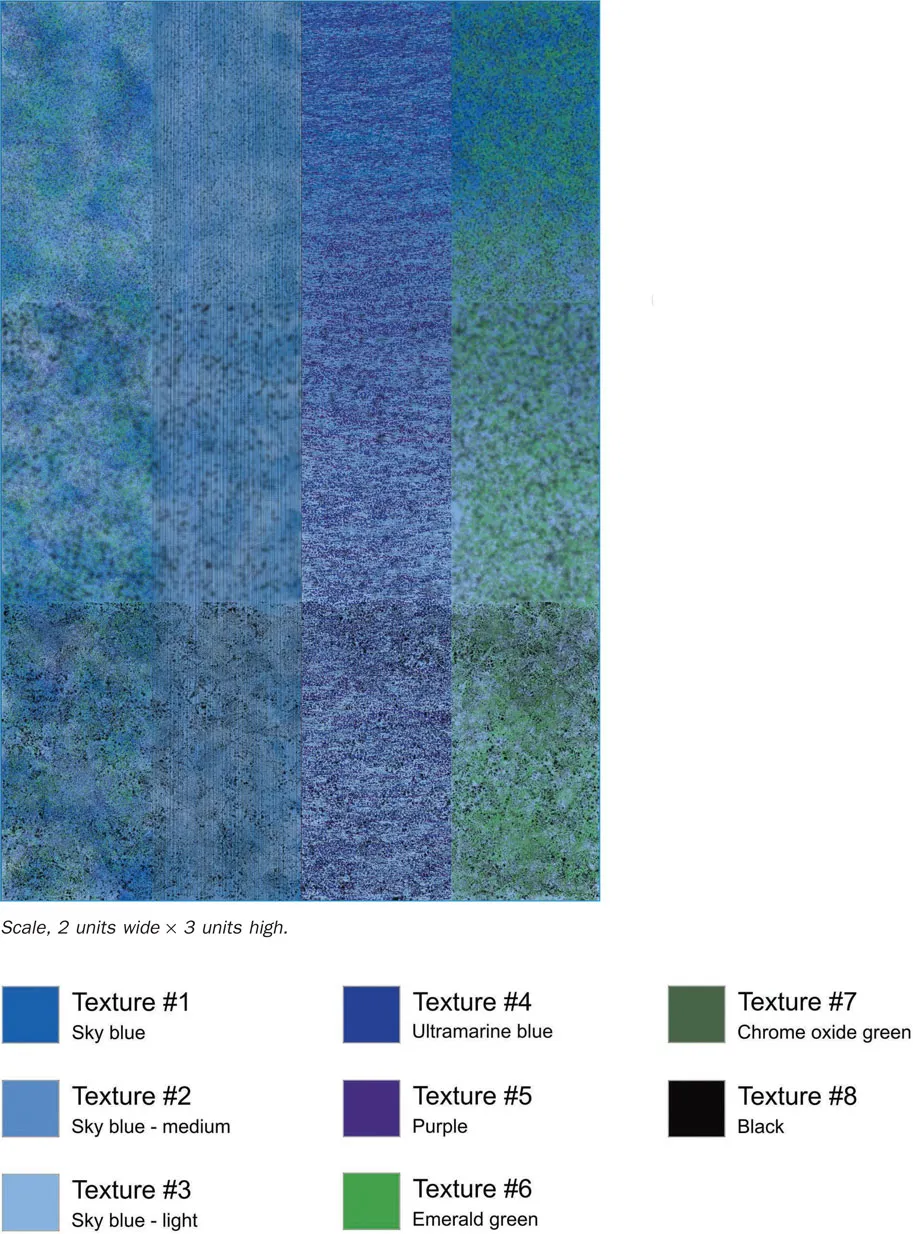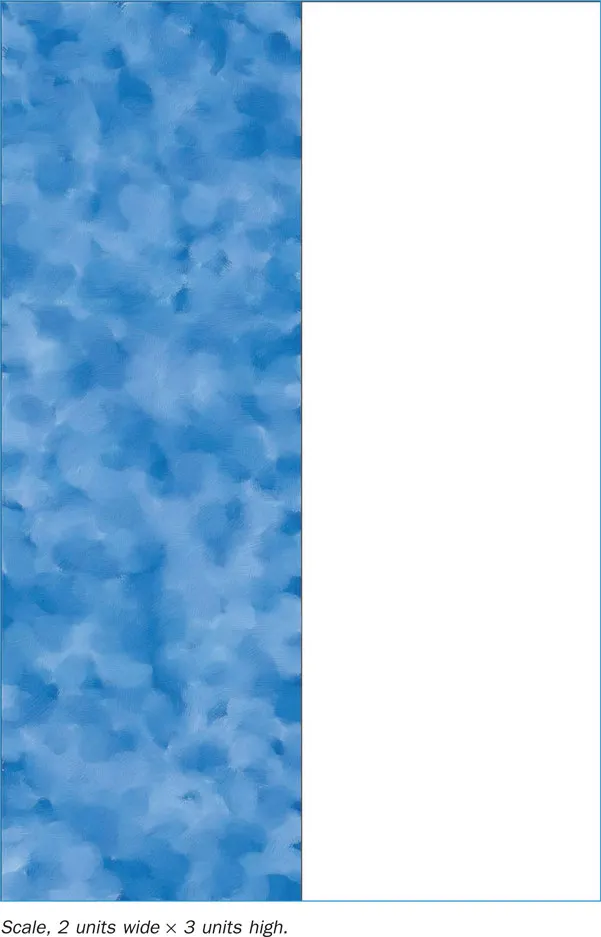
This is a test
- 280 pages
- English
- ePUB (mobile friendly)
- Available on iOS & Android
eBook - ePub
Scene Painting Projects for Theatre
Book details
Book preview
Table of contents
Citations
About This Book
The art, practice, and technique of scene painting is an essential part of theatre design. A scenic artist is responsible for translating the vision of the scenic designer to the realized scenery.Unlike all other scene painting books, this text will take you step-by-step through actual individual scene painting projects. Each project is commonly used in theatrical productions and each project builds upon the skills learned in the previous lesson. From wood and marble, to foliage and drapery, this book will teach the you how to become a skilled scenic painter.
Frequently asked questions
At the moment all of our mobile-responsive ePub books are available to download via the app. Most of our PDFs are also available to download and we're working on making the final remaining ones downloadable now. Learn more here.
Both plans give you full access to the library and all of Perlego’s features. The only differences are the price and subscription period: With the annual plan you’ll save around 30% compared to 12 months on the monthly plan.
We are an online textbook subscription service, where you can get access to an entire online library for less than the price of a single book per month. With over 1 million books across 1000+ topics, we’ve got you covered! Learn more here.
Look out for the read-aloud symbol on your next book to see if you can listen to it. The read-aloud tool reads text aloud for you, highlighting the text as it is being read. You can pause it, speed it up and slow it down. Learn more here.
Yes, you can access Scene Painting Projects for Theatre by Stephen Sherwin in PDF and/or ePUB format, as well as other popular books in Media & Performing Arts & Theatre. We have over one million books available in our catalogue for you to explore.
Information
PROJECT 1
Texture Techniques
WORK SURFACE
A 4′ × 6′ traditional or hard-covered flat.
TYPE OF PAINT
Rosco Off Broadway paint, Rosco Iddings Deep Colors, or a commercial latex substitute. See the COLOR SAMPLES page at the beginning of this book for brand and color suggestions.
TYPES OF CONSISTENCY
OUT OF THE CAN—Rosco suggests that the paint can be used right out of the can. This consistency might be thick. Add water to achieve a NORMAL consistency (see below).
NORMAL—Thick enough just to cover other projects in a single coat, assuming that the difference between the paint colors is not too great.
DILUTED—1 or 2 parts paint to 1 part water added to the NORMAL paint consistency.
WATERY—1 part paint to 5 to 10 parts water added to the NORMAL paint consistency. Rosco says: “Diluting with more than 2 parts water may reduce binder strength. Add Rosco Clear Acrylic Glaze to restore adhesion and flexibility.”
PAINTING TECHNIQUES
SCUMBLE (paint technique)—Blending two or more random patches of color. Size of the patches and the amount of blend will vary depending on the project.
GRADED WET BLEND (paint technique)—To arrange in a scale or series; a smooth blend of colors using a gradation, usually a linear pattern blended together.
SPONGING (paint technique)—Creating a texture by applying paint with a sponge.
DRY BRUSH (paint technique)—Dragging a brush loaded with paint across a dry surface (also called “combing”).
RAG ROLLING (paint technique)—Creating a texture by applying paint with a rolled rag dipped into paint.
ROLLING (paint technique)—Applying color with a paint roller. The texture of the roller cover will show when a dryer roller is used.
SPATTER (paint technique)—A method of texture using a brush to throw drops of paint on a surface.
SPLATTER (paint technique)—A method of texture using a brush to throw a combination of water and drops of paint on a surface (also called “wet spatter”).
BATH (paint technique)—A method of texture using a brush to throw a combination of a large quantity of water and drops of paint on a surface.
Glossary
OMNIDIRECTIONAL BRUSH STROKE—
Applying paint in a random pattern of brush strokes, usually in a figure-eight configuration. This will leave very little grain in the paint when dry.
KRAFT PAPER—
Nonabsorbent paper used to protect against spills and protect scenery from additional paint applications.
PAINT ELEVATIONS

TOOLS NEEDED
(See the Project pages for details.)
(See the Project pages for details.)
• A collection of scene and housepainting brushes
• Chalk or charcoal for cartooning
• Tape measure and straightedge
• Sponge
• Masking tape and Kraft paper
• Bucket of clean water
STEP 1
Two-Color Scumble
Two-Color Scumble

Prepare the Texture #1 and Texture #3 paint colors used for the scumble base.
• Add a little water to the NORMAL paint consistency. This will help the blending process.
• Divide the flat in half vertically.
Use a 2″ or 3″ brush to paint patches of the two scumble colors.
• Work a smaller area of the flat at a time.
• The patches of color can touch each other but should not blend at this time.
• Either use two brushes or clean the brush out a bit after applying each color.
• Before the paint dries, use a clean brush to blend the colors. Use an omnidirectional brush stroke when blending the colors together.
• Don’t overwork the blending. The goal is to have a number of colors as a result of the blending. There should be places where the two colors are not blended at all.
Titles in bold indicate paint names found on the elevation.
NOTES
• In terms of time, scumble should take only a little longer than base painting. Scumble should be a quick technique but adds more interest than one color of base paint.
• There are two major factors that affect the look of scumble. One is the number and contrast of the paint colors. The second is the size of the brushes used for the technique.
• Have a bucket of clean water. Although this seems obvious, handy clean water will solve a variety of problems.
STEP 2
Gradient
Gradient
Prepare the paint used for the graded wet blend (Texture #1, Texture #2, and Texture #3).
• These paints should be NORMAL consistency. (See NOTES.)
• Cover the scumbled half of the flat with Kraft paper.
The purpose of the graded wet blend is to achieve an even progression from one color to another.
• Divide the flat into three horizontal sections.
• Base the top section with Texture #1.
• Base the middle section with Texture #2.
• Blend these two colors before the...
Table of contents
- Cover
- Half Title
- Title Page
- Copyright Page
- Dedication
- Table of Contents
- PAINT ELEVATIONS
- COLOR SAMPLES
- FOREWORD
- ACKNOWLEDGMENTS
- INTRODUCTION
- ABOUT THIS BOOK
- PROJECTS